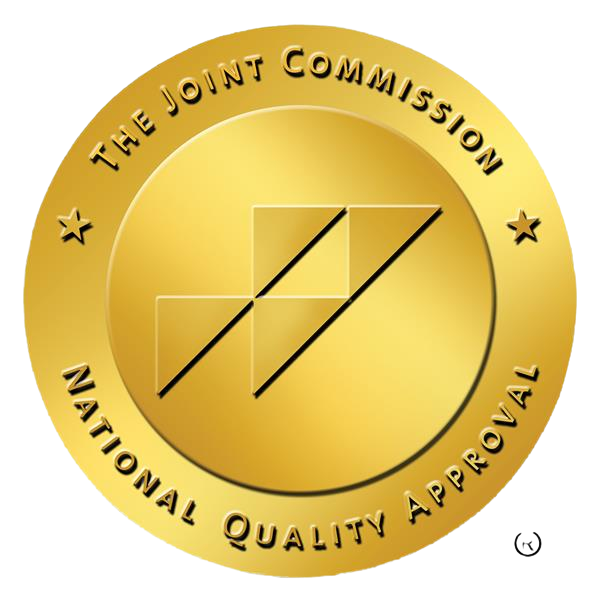How Long Does It Take To Detox From Meth
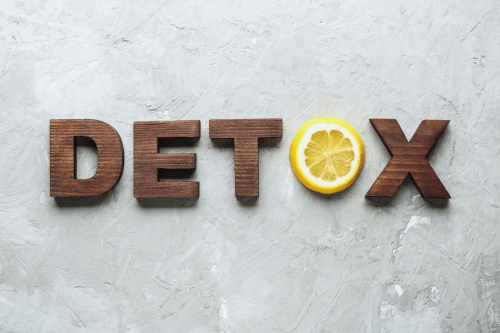
Table of Contents Seeking Drug Or Alcohol Detox? Sullivan Recovery is a leading drug and alcohol detox in Mission Viejo, California. Call Today! Clinically Reviewed By: Rachel Sweet | LMFT How Long Does It Take To Detox From Meth? Many people searching for help with methamphetamine addiction often ask the same question: how long does it take to detox from meth? Meth detox is a critical first step in treating stimulant use disorder. While each patient is different, most experience drug withdrawal symptoms within 24 hours of last use, with acute symptoms peaking around 7 to 10 days. Methamphetamine is a powerful central nervous system stimulant. It impacts the brain’s dopamine system and can cause intense cravings, mood swings, and a rapid decline in health. At Sullivan Recovery in Orange County, our meth detox programs are designed to help patients stabilize, reduce discomfort, and prevent relapse. What Is Meth Detox? Meth detox refers to the period during which the body eliminates methamphetamine and its byproducts. During this phase, a person may feel physical and psychological symptoms of substance dependence. The severity often depends on how long and how often the person used the drug. A medical detox can help manage withdrawal symptoms like insomnia, depression, nausea, perspiration, and paranoia. Detoxing from meth also carries risks related to mental health, including suicidal ideation, making supervision by a health professional vital. How Long Does It Take To Detox From Meth? So, how long does it take to detox from meth? For most people, meth detox begins within 6 to 12 hours of the last dose. Symptoms intensify over the next few days and start to ease after about 10 to 14 days. However, psychological effects like low motivation, mood instability, and cravings can last several weeks or months. At Sullivan Recovery, we recognize that methamphetamine detox is not a one-size-fits-all process. Each patient receives an individualized evaluation from a licensed physician to determine the safest and most effective detox program. Timeline of Meth Withdrawal Symptoms The meth detox timeline generally includes three stages: First 48 hours (Crash phase): Sudden fatigue, intense sleep, and depression. Days 3–10 (Acute withdrawal): Strong cravings, headache, irritability, insomnia, and possible vomiting. Days 11–30+ (Subacute withdrawal): Ongoing mood changes, appetite fluctuations, and drug cravings. While the physical symptoms improve, emotional instability and impaired reward system function may linger. This is why Sullivan Recovery integrates therapy and medication support into our rehab approach. Medications Used During Meth Detox There are no FDA-approved medications specifically for methamphetamine detox, but certain drugs can reduce withdrawal intensity. Common prescriptions include: Bupropion: An antidepressant that targets dopamine and norepinephrine. Mirtazapine: Helps with mood, sleep, and appetite. Modafinil: Improves alertness and may ease fatigue. Fluoxetine (a selective serotonin reuptake inhibitor): Treats depression and anxiety symptoms. In some cases, a benzodiazepine may be used short-term to manage anxiety or paranoia under strict health care supervision. Sullivan Recovery works with licensed physicians and doctors of pharmacy to ensure safe medication management during detox. Psychological Effects of Meth Withdrawal The brain takes time to adjust after prolonged methamphetamine use. The damage to dopamine and serotonin systems can affect motivation, pleasure, and emotional control. Patients may struggle with depression, anxiety, and emotional numbness. Many experience disrupted sleep, intense mood swings, and loss of appetite, which can increase the risk of relapse. The central nervous system remains overstimulated during early abstinence, often resulting in agitation, insomnia, and trouble concentrating. Some may also develop symptoms linked to substance dependence, including paranoia and cognitive fog. Support from treatment centers like Sullivan Recovery helps patients rebuild healthy habits. Therapy, structure, and exercise are essential parts of managing post-acute withdrawal symptoms. We use interventions like selective serotonin reuptake inhibitors (SSRIs), fluoxetine, and bupropion to regulate mood and reduce cravings, as well as support overall health and stability during recovery. Importance of Medical Detox and Supervision Detoxification from methamphetamine should be done under medical supervision to ensure patient safety. Some people may develop suicidal thoughts, psychosis, or hallucinations. Others may experience severe stress, headaches, or vomiting. Without proper care, symptoms like nausea, perspiration, and mental health deterioration can become overwhelming. Professional oversight from a licensed physician or health professional ensures that medication options—such as modafinil, mirtazapine, or even short-term benzodiazepine use—are managed safely. Our team also monitors for signs of co-occurring substance abuse, such as alcohol, fentanyl, or other amphetamine use, which can complicate detox. Our meth detox program in Mission Viejo includes 24/7 monitoring, emotional support, and access to emergency care if needed. We also accept most health insurance plans to make medical detox more accessible. Each patient receives a full clinical evaluation and individualized care plan, helping reduce risk and improve outcomes in line with World Health Organization and American Addiction Centers guidelines. Why Detoxing Alone Can Be Dangerous Attempting to detox at home can lead to severe relapse or untreated medical complications. The World Health Organization and American Addiction Centers recommend detox in a structured facility to protect both physical dependence and mental health outcomes. Without clinical oversight, patients may face nausea, vomiting, insomnia, paranoia, or even seizures—especially with long-term methamphetamine or mixed drug use. The risk of substance abuse restarting is high without supervision or support. Individuals may not be prepared to manage intense drug withdrawal, mood crashes, or dopamine system dysfunction, all of which impact motivation, appetite, and emotional control. Dangerous symptoms like perspiration, headache, and depression may go untreated, increasing the odds of returning to meth, alcohol, or other stimulant use disorders. At Sullivan Recovery, we combine clinical oversight with therapy and holistic care to increase long-term sobriety. Our meth detox services include evaluation by a licensed health professional, access to medications like fluoxetine, mirtazapine, or bupropion, and evidence-based approaches like contingency management. Our outpatient model offers continued support after detox, helping you stay on track through structured programs, insured health care services, and personalized recovery goals. Factors That Influence How Long Detox Takes Several factors can affect how long it takes to detox from meth, including:
What Are Depressants

Table of Contents Seeking Drug Or Alcohol Detox? Sullivan Recovery is a leading drug and alcohol detox in Mission Viejo, California. Call Today! Clinically Reviewed By: Rachel Sweet | LMFT What Are Depressants? Understanding what are depressants is vital in identifying how these drugs affect the central nervous system and why they are often linked to substance abuse, addiction, and serious health risks. Depressants are a class of drugs that decrease neuronal activity in the brain, targeting areas that control arousal, behavior, and mood. They are commonly prescribed as medication for insomnia, seizure disorders, anxiety, and even pain management, often in the form of benzodiazepines, barbiturates, nonbenzodiazepines, or sedatives like zolpidem and eszopiclone. However, misuse can lead to severe outcomes including physical dependence, drug withdrawal, and toxicity. Chronic use may impair cognitive function, reduce concentration, and affect neuron signaling. People abusing these drugs often mix them with alcoholic beverages, opioids, or analgesics, increasing the risk of respiratory system depression, coma, or death. Without proper supervision, the cycle of misuse and withdrawal can damage both the spinal cord and receptor function, making professional support from a treatment center essential. How Do Depressants Affect the Body? Depressants act by enhancing the effect of gamma-aminobutyric acid (GABA), a key neurotransmitter that slows nerve impulses in the brain. This mechanism targets GABAA receptors, leading to relaxation, sedation, and reduced psychomotor agitation, which helps control panic, anxiety, and sleep disorders. The effect extends through the central nervous system, decreasing heart rate, blood pressure, and overall arousal levels. At moderate levels, these drugs help calm the nervous system, reduce stress, and ease muscle tension. But in higher dose ranges, they can trigger adverse effects like dizziness, amnesia, vomiting, nausea, and somnolence. In severe misuse cases—especially when combined with other narcotics like oxycodone, hydrocodone, or codeine—users risk hypoventilation, shortness of breath, bradycardia, and unconsciousness. In such cases, depressant toxicity can lead to emergency conditions, making detox and harm reduction support at a certified treatment center critical. Common Types of Depressants There are several categories of depressants, each with distinct effects: Benzodiazepines like diazepam, alprazolam, lorazepam, clonazepam, and chlordiazepoxide are prescribed to treat anxiety, panic disorders, and seizures. Barbiturates, including phenobarbital, amobarbital, secobarbital, and pentobarbital, are older sedative drugs once used for anesthesia and sleep issues. Nonbenzodiazepine hypnotics, like zolpidem and eszopiclone, also induce sleep but work differently on GABAA receptors. Methaqualone and ethanol (found in alcoholic beverages) are also considered depressants due to their effects on the central nervous system. Medical Uses of Depressants Doctors may prescribe depressants for: Insomnia: To help patients sleep more easily. Anxiety and panic disorders: To calm psychomotor agitation and restore focus. Seizure control: As anticonvulsant medication. Anesthesia and muscle relaxant effects: During surgeries or for severe pain. Alcohol withdrawal: To reduce irritability, stress, and suicidal ideation in detox. At Sullivan Recovery, we closely monitor dose, treatment plans, and drug withdrawal symptoms for clients undergoing detox from depressants and other substances. Dangers of Depressant Abuse While these medications have valid medical uses, substance abuse is common. Taking more than the prescribed dose, combining depressants with other drugs like opiates, codeine, hydrocodone, oxycodone, or alcohol, increases the risk of respiratory system suppression, coma, or death. Chronic use may lead to tolerance, requiring higher doses to feel effects, and eventually, addiction. Long-term depressant use may result in: Cognitive decline Slurred speech Poor concentration Coordination issues Memory problems Many clients arrive at our treatment center after years of misusing depressants, often without knowing the risk of physical dependence, drug withdrawal, and toxicity. Depressant Withdrawal Symptoms Drug withdrawal from depressants can be life-threatening and must be medically supervised, especially when physical dependence has developed over long-term use. These symptoms occur as the central nervous system, brain, and neurotransmitter functions struggle to recalibrate without the depressant’s impact on GABAA receptors. This rebound effect can disrupt heart rate, blood pressure, and behavior, often requiring urgent care. Sudden cessation can cause: Seizures due to overexcited neurons firing without GABA suppression Tachycardia, or rapid heart rate, triggered by elevated arousal Hypertension, as blood pressure rises sharply Irritability and increased stress responses Nausea, vomiting, and persistent headache Extreme anxiety, sometimes requiring anxiolytic support Muscle pain and spasms, with possible psychomotor agitation Severe mood swings and suicidal ideation, often linked to altered neurotransmitter levels Withdrawal from benzodiazepines or barbiturates is especially dangerous due to their potency and direct effect on nerve inhibition. Drugs like diazepam, triazolam, clonazepam, and secobarbital require careful tapering, as stopping abruptly may result in serious adverse effects, coma, or death. At Sullivan Recovery, our treatment center offers 24/7 medically managed detox care using approved protocols and harm reduction strategies. We aim to stabilize each patient by managing symptoms, preventing toxicity, and supporting long-term recovery from substance abuse. Depressants and Addiction Repeated use changes how the brain functions, especially in areas that control mood, behavior, and decision-making. These changes lead to cravings and compulsive drug use. Addiction can occur even when taking prescribed medication if not used properly. A physician should always monitor use. Signs of addiction to depressants include: Taking more than prescribed Seeking early refills Using depressants to cope with stress Mixing with alcohol or stimulants like amphetamine Failed attempts to stop Poor job or school performance If you or a loved one shows these signs, a treatment center like Sullivan Recovery can help. Drug Interactions and Overdose Risks Combining depressants with other central nervous system suppressants—especially alcohol, opioids, or analgesics—can dangerously slow heart rate, breathing, and lead to unconsciousness or overdose. Common overdose symptoms include: Bradycardia Low blood pressure Blue lips or fingers Coma Shallow or stopped breathing Opioid overdose combined with depressants often requires immediate detox and may require the use of naloxone. Sullivan Recovery provides 24/7 monitoring to prevent fatal outcomes during detox. How Depressants Show Up in Drug Tests Depressants can be detected in urine, blood, or hair samples. Depending on the drug, results vary: Benzodiazepines: Up to 10 days in urine Barbiturates: 2–15 days in urine Alcohol: Measured by blood
How Long Does Meth Stay In Your System
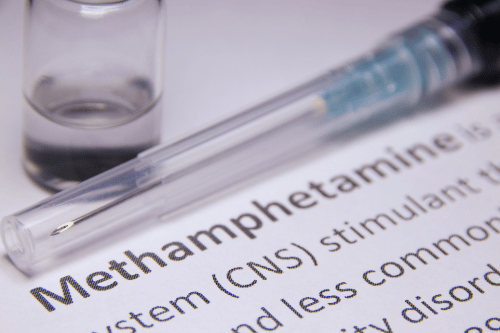
Table of Contents Seeking Drug Or Alcohol Detox? Sullivan Recovery is a leading drug and alcohol detox in Mission Viejo, California. Call Today! Clinically Reviewed By: Rachel Sweet | LMFT How Long Does Meth Stay In Your System How Long Does Meth Stay In Your System: Detection Windows and What to ExpectThe question “How long does meth stay in your system?” is one of the most searched topics by those who use methamphetamine or suspect someone close to them may be struggling. Crystal meth, a powerful stimulant, can remain detectable in the body for varying periods depending on the type of drug test used. Understanding detection times, physical effects, and treatment options can help guide those considering recovery through medical professionals or treatment centers like Sullivan Recovery in Orange County. What Affects the Life of Meth in the Body? The life of meth in the body varies by the dose of meth taken, individual metabolism, and frequency of use. Chronic meth users may have longer detection windows due to the buildup of meth in fatty tissues. People with faster metabolisms may eliminate meth more quickly, while those with slower metabolisms retain it for a longer time frame.Body temperature and physical activity can also influence how fast meth is processed. A higher metabolic rate may lead to a shorter detection window, while sedentary individuals may take longer to metabolize the drug. These factors make predicting exact detection times challenging. Types of Drug Tests and Detection Times Urine Tests Urine tests are a common method used to detect meth. For occasional users, the presence of meth can be identified for up to 3 days after use. Chronic users may test positive for an extended period—up to 7 days or more.Urine drug testing is widely used in both clinical and legal settings due to its ease and affordability. At Sullivan Recovery, drug testing through urine tests helps monitor progress during meth addiction treatment programs. Saliva Tests Saliva tests detect meth in oral fluids within 10 minutes of use and can remain positive for up to 72 hours. They are less invasive and provide quick results.These are commonly used in roadside screenings and workplace drug testing. Due to their short detection window, they are less effective for detecting long-term meth use. Blood Tests Blood tests are highly accurate but have a shorter detection window. Meth can usually be detected in the blood within several hours of use and up to 1–3 days.Because blood tests are invasive and require medical supervision, they are typically used in emergency or hospital settings. Sullivan Recovery coordinates with medical professionals when such tests are needed during detox or stabilization. Hair Follicle Tests Hair follicle tests can detect meth use for an extended period—up to 90 days after the last use. This method is especially effective for identifying long-term meth use disorder.Meth is deposited into hair follicles as the hair grows. Since hair tests offer a broad detection window, they are used in legal or forensic investigations more than clinical environments. The Effects of Meth Can Linger Short-Term Effects The short-term effects of meth can include intense rush, elevated heart rate, increased blood pressure, and raised body temperature. These physical symptoms often follow the initial rush, a sensation caused by rapid dopamine release in the brain. The effects of meth can impair judgment, cause irritability, and increase the likelihood of engaging in risky behaviors.In many cases, these symptoms emerge quickly—sometimes within minutes—and may last for hours depending on the dose of meth and individual metabolism. Saliva tests and blood tests can confirm the presence of meth during this early detection window. The short-term high may fade fast, but drug tests can still detect meth through urine tests or other types of drug tests, even after the euphoria wears off. Long-Term Use Long-term use leads to dangerous outcomes such as meth mouth, severe weight loss, and tooth decay, especially in chronic users. Meth mouth is caused by dry mouth, poor hygiene, and extended periods of high sugar intake—symptoms tied directly to the effects of crystal meth on the body. Chronic meth users may also develop irregular heartbeat and experience lasting damage to cardiovascular health.Sustained meth use increases the risk of developing mental health conditions, including anxiety, paranoia, and psychosis, often requiring dual diagnosis treatment. Meth use disorder can also lower motivation and concentration due to depleted levels of dopamine, creating a strong potential for addiction. Sullivan Recovery offers evidence-based treatment designed to manage both the physical symptoms and psychological toll of methamphetamine addiction. We combine medical professionals, hair follicle tests, and outpatient programs to provide support during each phase of the recovery journey. Meth Withdrawal Symptoms and the Detox Process Meth withdrawal symptoms may begin within 24 hours of last use and include fatigue, anxiety, and depression. These symptoms can persist for several weeks, especially in chronic meth users.The detox process should take place under medical supervision, particularly when symptoms include hallucinations or suicidal thoughts. At Sullivan Recovery, our outpatient programs allow individuals to safely detox while still living at home, with daily support from trained clinicians. How Drug Testing Guides Treatment for Meth Addiction Drug testing is essential for assessing current meth use and guiding treatment. The types of drug tests chosen—urine, blood, saliva, or hair follicle—depend on the detection time frame and specific needs of the client.At Sullivan Recovery, drug tests are used to verify abstinence, monitor progress, and adjust treatment plans. Our admissions team works closely with clients to determine the best type of drug test based on their recovery goals. Risk Factors and the Physical Effects of Meth Meth use impacts the entire body. Physical symptoms include increased blood pressure, irregular heartbeat, and heightened body temperature. These changes can be dangerous, especially in those with underlying health conditions.Long-term use also affects levels of dopamine, which can lead to severe depression and a lack of motivation. Meth addiction can quickly take over a person’s life, damaging relationships, employment, and overall health. The Role of Crystal Meth in
Can You Experience Detox Symptoms While On Suboxone
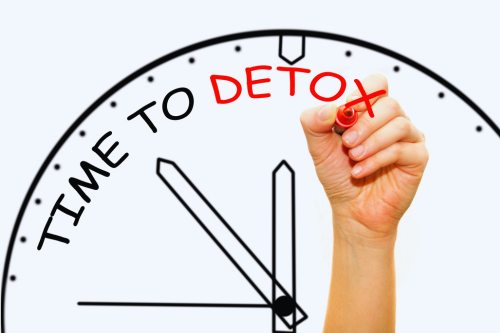
Table of Contents Seeking Drug Or Alcohol Detox? Sullivan Recovery is a leading drug and alcohol detox in Mission Viejo, California. Call Today! Clinically Reviewed By: Rachel Sweet | LMFT Can You Experience Detox Symptoms While On Suboxone? Can you experience detox symptoms while on Suboxone? The short answer is yes, especially during dosage changes or if Suboxone is misused. Even though Suboxone helps reduce opioid withdrawal symptoms, it can still produce physical symptoms and psychological symptoms under certain conditions. At Sullivan Recovery, we often treat individuals with opioid addiction and opioid use disorder who are using Suboxone under medical supervision. Our outpatient program supports clients facing both opioid dependence and the challenging withdrawal process. What Is Suboxone? Suboxone is a combination of buprenorphine and naloxone. Buprenorphine is a partial opioid agonist, which means it activates opioid receptors in the brain but produces a ceiling effect that limits euphoria and respiratory depression. This makes it safer than full opioid agonists like heroin or oxycodone. Naloxone, included to deter misuse, blocks opioid effects if the medication is injected or misused. Together, these components help reduce drug cravings and prevent overdose. Suboxone plays a central role in medication-assisted treatment (MAT) for individuals with opioid use disorder and opioid addiction. It is used under medical supervision in both inpatient and outpatient treatment programs, including at Sullivan Recovery. Suboxone supports long-term stabilization by minimizing opioid withdrawal symptoms, and is often combined with behavioral therapy for more effective treatment. It is a foundational part of many treatment plans within substance abuse treatment settings and treatment facilities, helping clients move safely through detox and into recovery. Can You Experience Detox Symptoms While Taking Suboxone? Yes. Detox symptoms while on Suboxone can happen, especially during incorrect usage or abrupt discontinuation. This includes starting Suboxone too early in the withdrawal timeline, before full opioid withdrawal symptoms are present, which may result in precipitated withdrawal. It can also occur when someone stops Suboxone suddenly, increases or decreases the dose of Suboxone without a medical professional, or engages in misuse, which disrupts the brain’s balance. These withdrawal effects may include a range of physical symptoms such as muscle aches, fatigue, and changes in heart rate, as well as psychological symptoms like anxiety, depression, and mood swings. These symptoms reflect both the physical and psychological aspects of physical dependence and psychological dependence. At Sullivan Recovery, our treatment team helps clients manage these challenges through structured treatment plans, continuous monitoring, and support within a supportive environment. Early intervention and professional guidance are key to reducing Suboxone withdrawal symptoms and supporting long-term healing. Common Suboxone Withdrawal Symptoms Although Suboxone reduces opioid withdrawal symptoms, it can cause its own withdrawal when stopped, especially after long-term use or improper tapering. Symptoms of Suboxone withdrawal reflect the body’s adjustment to the absence of a partial opioid agonist, and they can vary depending on dosage, duration of use, and physical dependence. Many individuals experience both physical symptoms and psychological symptoms during this period. Suboxone withdrawal symptoms may include muscle aches, sweating, chills, fatigue, drug cravings, irritability, anxiety, insomnia, and nausea. These are common symptoms shared with other types of opioid withdrawal, though they are usually less intense due to Suboxone’s pharmacological ceiling effect. Still, they may feel severe without the right medical supervision or support from a structured treatment program. At Sullivan Recovery, we help clients manage these withdrawal effects within a safe, monitored environment. Our outpatient setting provides access to healthcare providers, individualized treatment plans, and optional behavioral therapy to ease both the physical and psychological aspects of Suboxone discontinuation. Early recognition of these symptoms reduces the risk of relapse and helps guide a smoother recovery journey. Understanding the Withdrawal Timeline The withdrawal timeline for Suboxone varies depending on several factors: length of use, dosage, metabolism, and overall health. Acute symptoms can begin within 24-72 hours of the last dose. Severe symptoms may peak around day 3-5 and taper off over 1-2 weeks. Some people report lingering psychological symptoms or intense cravings for several weeks or more, which is known as post-acute withdrawal syndrome (PAWS). Why Does This Happen on a Medication Designed to Prevent Withdrawal? Suboxone is effective, but it’s still an opioid. Because buprenorphine is a partial opioid agonist, it can still lead to physical dependence. This doesn’t mean someone is addicted—it means the body adjusts to having the medication in the system. Stopping it too quickly or using it incorrectly can trigger opioid withdrawal and a resurgence of opioid withdrawal symptoms. That’s why medical supervision is key during Suboxone use and tapering. Can Detox Symptoms Be Managed? Yes. Managing detox symptoms while on Suboxone involves proper tapering, ongoing support, access to a treatment center, and monitoring by qualified healthcare providers. Under medical supervision, clients can avoid the risks associated with sudden changes in the dose of Suboxone and reduce the likelihood of experiencing severe withdrawal symptoms or complications linked to physical dependence. Our outpatient program at Sullivan Recovery gives clients the tools to manage both physical symptoms and psychological symptoms in a supportive environment. Treatment includes medication adjustments, symptom tracking, and the use of evidence-based methods like behavioral therapy to address mental health disorders, psychological dependence, and drug cravings. We focus on building stable routines and creating individualized treatment plans that support long-term healing and reduce the risk of relapse. With the right combination of medical care, peer support, and professional guidance, the withdrawal process can be handled safely and effectively. Our goal is to promote a steady recovery journey and ensure every client has the support they need at each stage of Suboxone detox and beyond. When Do Detox Symptoms Start While on Suboxone? People may feel symptoms of withdrawal from opioids if they take Suboxone too early after using a full opioid. This is called precipitated withdrawal, and it’s marked by sudden and intense physical symptoms and psychological aspects like anxiety or agitation. To avoid this, Suboxone should only be started once mild opioid withdrawal symptoms are present, under the
How Long Does Cocaine Stay In The Body

Table of Contents Seeking Drug Or Alcohol Detox? Sullivan Recovery is a leading drug and alcohol detox in Mission Viejo, California. Call Today! Clinically Reviewed By: Rachel Sweet | LMFT How Long Does Cocaine Stay In The Body? Cocaine is a powerful stimulant drug that can stay in the body for varying lengths depending on several factors. Understanding how long cocaine stays in the body is important for those concerned about health, recovery, or upcoming drug tests. This includes knowing the type of drug test, metabolism of cocaine, and how cocaine metabolites affect detection. What Determines How Long Cocaine Stays In The Body? Several key factors influence how long cocaine is detectable in the body. These include method of ingestion, metabolic rates, body composition, and hydration levels. The period of time someone uses cocaine also affects detection, especially among heavy users and chronic users, whose systems accumulate more cocaine metabolites over time. Other variables include liver function, which directly affects the breakdown of cocaine into primary metabolites. A person’s heart rate, frequency of use, and overall health can also impact the detection window. Different types of drug tests—such as urine tests, blood tests, and saliva tests—will reflect these individual differences. Cocaine Metabolism and Metabolites Cocaine breaks down into primary metabolites such as benzoylecgonine and ecgonine methyl ester, which remain in the body after the drug’s effects wear off. These cocaine metabolites are what most drug tests and drug testing procedures target. The metabolism of cocaine depends on individual metabolism, body fat, and the efficiency of liver function. People with faster metabolisms tend to clear these substances more quickly, while those with impaired liver function may retain cocaine metabolites for longer. For chronic users, these byproducts can linger in the system and be detected long after the last dose. This is why understanding the life of cocaine in the body requires more than just tracking its euphoric phase. Method of Ingestion Matters The method of ingestion—whether snorting, smoking, or injecting—affects both the effects of cocaine use and how long it stays in the body. Smoking and injecting deliver faster highs and lead to a shorter cocaine detection window, as the drug exits the bloodstream more rapidly. Snorting cocaine produces a slower onset, resulting in a longer detection time for cocaine metabolites in drug testing. Different ingestion routes also influence heart rate and increase the risk of short-term effects such as dilated pupils and cardiovascular strain. Each method leaves behind cocaine metabolites detectable in urine tests, blood tests, and even hair tests. Because of this, the type of drug test used is critical in determining how the presence of cocaine is confirmed based on ingestion behavior. Cocaine’s Presence in Blood Cocaine appears in blood within minutes. Blood tests can detect it for up to 12 hours in most cases. For chronic users, this window may extend. However, the hours in blood are typically limited, making this less reliable for long-term detection. Cocaine in Saliva Saliva tests are non-invasive and detect the presence of cocaine for 1 to 2 days after use. They are often used for roadside or workplace screening. Saliva tests are limited by factors like recent food intake or mouthwash, but remain useful for short-term detection. Urine Detection Window Urine tests are the most common form of drug testing for cocaine. In occasional users, urine tests detect cocaine metabolites for up to 3 days. For heavy users, the window can extend to 2 weeks. This extended range makes urine tests useful in both clinical and legal settings. Hair Tests: The Longest Detection Time Hair tests and hair testing can detect cocaine for up to 90 days or longer. When cocaine enters the bloodstream, it binds to hair follicles and becomes part of the hair shaft. Hair samples from the scalp are used to identify long-term cocaine abuse. Cocaine in Breast Milk Cocaine can pass into breast milk, exposing infants to harmful cocaine metabolites that affect development and safety. The presence of cocaine in breast milk depends on individual metabolism, liver function, and the method of ingestion. Because cocaine abuse during nursing poses severe risks, mothers with a substance use disorder should seek Cocaine Addiction Treatment to protect their child and begin their recovery journey. Infants exposed through breast milk may suffer from agitation, poor feeding, or withdrawal-like symptoms. Medical professionals recommend that mothers undergoing treatment options avoid breastfeeding until all primary metabolites, including ecgonine methyl ester, are cleared from their system. The detection window for cocaine in milk mirrors that in blood, where blood tests may confirm exposure. Detection Time Varies by User Type Occasional users may eliminate cocaine metabolites more rapidly due to lower accumulation in the body. Their shorter period of time using the drug allows for quicker clearance, particularly in urine tests and saliva tests. In contrast, heavy users and chronic users develop a buildup of primary metabolites that store in body fat, leading to extended detection times across multiple types of drug tests. This means that the cocaine detection window varies significantly depending on usage patterns and overall metabolism of cocaine. Those with faster metabolisms may still show traces in hair follicles for months, especially when hair tests or hair samples are used. Understanding this helps clarify how different user profiles affect drug testing results. Cocaine’s Effects on Heart Rate and Pupils The short-term effects of cocaine use include a rapid increase in heart rate and visibly dilated pupils. These physiological changes often occur within minutes after ingestion and are signs of recent use. Elevated heart rate can also increase the risk of heart attack, especially in those with underlying conditions or during high doses. Because these effects can subside within hours, blood tests may still detect the presence of cocaine even after visible symptoms fade. These indicators are frequently assessed during clinical evaluations of cocaine abuse and may appear alongside other symptoms like agitation or paranoia. Monitoring heart rate in particular helps healthcare professionals evaluate the severity of recent use and guide appropriate treatment
Living With An Alcoholic

Table of Contents Seeking Drug Or Alcohol Detox? Sullivan Recovery is a leading drug and alcohol detox in Mission Viejo, California. Call Today! Clinically Reviewed By: Rachel Sweet | LMFT Living With An Alcoholic Living with an alcoholic can create long-term stress, instability, and emotional strain. Whether it’s a spouse, sibling, or alcoholic parent, the impact reaches every corner of family life. Alcohol use disorders are serious medical conditions that require support, structure, and professional treatment to manage effectively. Understanding Alcohol Use Disorders Alcohol use disorders affect millions of people across the U.S. each year. These disorders involve problematic alcohol use that leads to significant physical, emotional, and behavioral consequences. As alcohol dependence grows, the alcoholic in denial may become more isolated, erratic, or aggressive. The Strain of an Alcoholic Partner An alcoholic partner can disrupt daily routines, cause relationship issues, and create ongoing conflict. Mood swings and emotional violence often replace calm communication, leading to strained relationships. If alcohol consumption becomes frequent or excessive, the household environment may become volatile. How Alcohol Abuse Affects the Entire Family Alcohol abuse damages the health, security, and emotional well-being of the entire family. Children with alcoholic parents may face mental health challenges or develop their own substance use disorder later in life. Living with an alcoholic parent often includes physical abuse, emotional neglect, and unstable home dynamics. Drinking Habits and Risky Behaviors Problematic drinking habits lead to risky behaviors such as drunk driving, gambling, or unsafe sexual activity. These actions increase stress on the family and may cause financial strain, legal trouble, or accidents. Alcoholic individuals may downplay the consequences, leading to deeper alcohol dependence. Physical Health and the Effects of Alcohol Long-term alcohol use can destroy physical health by damaging the liver, heart, brain, and immune system. Withdrawal symptoms from alcohol dependence may include tremors, seizures, or delirium tremens. Alcohol addiction also weakens the body, making it harder to heal from injuries or illness. Alcoholic in Denial: Recognizing the Signs An alcoholic in denial may hide alcohol, lie about drinking patterns, or become defensive. Denial can make it harder for family members to seek help or establish boundaries. This resistance often delays recovery from alcohol and keeps the cycle of abuse going. Mental Health Issues and Co-Occurring Disorders Many individuals with alcohol use disorders also face mental health issues such as depression, anxiety, or PTSD. Alcohol abuse may worsen these symptoms and make it harder to maintain emotional stability. Professional help is necessary to treat both the addiction and underlying mental health challenges. Intimate Partner Violence and Domestic Violence Alcohol often plays a role in intimate partner violence and domestic violence cases. Alcohol lowers inhibitions and increases the risk of physical violence or emotional abuse. If you feel unsafe, it is critical to seek immediate support or protection from law enforcement or shelters. Financial Strain Caused by Alcohol Abuse Ongoing alcohol consumption can quickly drain household resources. Medical bills, job loss, court fees, or frequent spending on alcohol all add to the financial strain. Alcohol dependency can turn into a financial crisis if not addressed through alcohol addiction treatment. The Influence of Alcohol on Personal Relationships The influence of alcohol can break trust and destroy personal relationships. Friends and family may distance themselves to avoid the toxic behavior. Without support, the alcoholic may isolate and sink deeper into alcohol dependency and mental health issues. Social Drinking vs. Alcohol Addiction While social drinking may seem harmless, it can easily become alcohol addiction if the person begins using alcohol to escape reality. What starts as weekend binge drinking may lead to daily alcohol use, withdrawal symptoms, and alcohol rehab. It’s important to recognize when social drinking shifts into addictive behavior. Strained Relationships and Family Dynamics Strained relationships form when alcohol use takes priority over honesty, connection, and care. Partners may argue constantly, and children may avoid home. Alcohol abuse breaks down trust and creates emotional violence that affects every member of the household. The Role of Family Therapy Family therapy sessions can help families process trauma, rebuild communication, and set boundaries. Working with a licensed therapist can ease relationship issues caused by substance abuse issues. Family therapy is often part of outpatient treatment at Sullivan Recovery in Mission Viejo. When to Seek a Professional Interventionist A professional interventionist can guide families through the process of confronting a loved one about their alcohol abuse. This expert support can help ensure safety and improve the chances of getting the alcoholic to accept alcohol treatment. Early action prevents long-term damage to mental health and family life. Alcoholic Parents and Generational Trauma Growing up with an alcoholic parent often leads to trauma, shame, and confusion. Children may develop addictive behavior, struggle in school, or have trouble forming healthy relationships. Parents with substance use problems often unintentionally repeat cycles of pain and neglect. Emotional Impact and Mood Swings Mood swings are common in those with alcohol dependency. Alcohol alters brain chemistry, causing sudden emotional shifts and impulsive reactions. These mental health issues can escalate over time and contribute to ongoing relationship issues within the home. The emotional impact of alcohol abuse often affects the entire family, especially partners and children. Substance use disorder leads to unpredictable behavior, which erodes trust and creates long-term stress. Loved ones may develop mental health challenges of their own, such as anxiety or depression. Ongoing alcohol consumption may cause intense feelings of guilt, shame, or denial in both the alcoholic and their family members. Over time, emotional instability becomes part of the household dynamic. Families often need mental health services to process the trauma and restore emotional balance. Recognizing Physical Abuse Physical abuse, even when infrequent, should never be ignored. Alcohol increases aggression, and many domestic violence cases are fueled by problematic alcohol use. If physical violence occurs, the safest response is to seek help and separate from the abusive environment. Alcohol use disorders are linked to higher rates of intimate partner violence, including both emotional violence and physical harm. These situations
Is Alcohol A Stimulant Or A Depressant

Table of Contents Seeking Drug Or Alcohol Detox? Sullivan Recovery is a leading drug and alcohol detox in Mission Viejo, California. Call Today! Clinically Reviewed By: Rachel Sweet | LMFT Is Alcohol A Stimulant Or A Depressant? Many people wonder, “Is alcohol a stimulant or a depressant?” The answer lies in how alcohol affects brain activity and bodily functions. While alcohol may cause stimulating effects at first, it is classified as a depressant drug due to its dominant sedative effects on the central nervous system. Alcohol’s Initial Stimulating Effects After drinking small amounts of alcohol, people often experience a sense of euphoria and increased energy levels. This is due to a spike in dopamine production, which temporarily boosts mood and neural activity. These stimulating effects are misleading because they fade as blood alcohol concentration rises. This initial high may include talkativeness, risky behavior, and aggressive behavior, especially in social settings. But these effects don’t mean alcohol is a true stimulant. Instead, they reflect the drug’s early impact on brain function before its depressant effects fully take hold. Alcohol as a Depressant Drug Once the initial stimulant effects wear off, the true nature of alcohol emerges. Alcohol slows brain activity, reduces reaction times, and impairs motor coordination. These are classic signs of a nervous system depressant. As a depressant drug, alcohol interferes with bodily functions like heart rate, body temperature, and breathing. This disruption leads to slower reaction times, poor decision-making, and cognitive impairments. These depressant effects increase with higher doses of alcohol. Effects of Alcohol on the Brain The effects of alcohol vary depending on the person, but all experience some form of cognitive impairments. Alcohol reduces cognitive function, leading to lack of coordination and impaired coordination. Long-term exposure worsens these symptoms. Chronic alcohol use disorder often damages memory, focus, and judgment. These negative effects alter brain structure and lead to long-lasting mental health issues. The connection between alcohol and mental health disorder symptoms is well-established. Alcohol and Dopamine Release The release of dopamine explains alcohol’s temporary pleasure. As dopamine levels rise, users feel a short-lived euphoric effect. However, over time, repeated use reduces natural dopamine production, leading to dependency and alcohol addiction. People with alcohol dependence drink more to recreate that original high. This process increases alcohol tolerance, meaning higher amounts of alcohol are needed to feel the same effects, which raises the risk of alcohol poisoning and alcohol abuse. The Physical Health Impact Alcohol weakens the human body over time. Excessive drinking raises the risk of heart disease, types of cancer, and even heart attack due to chronic inflammation and oxidative stress. It also slows the heart rate and disrupts body chemistry, putting stress on vital organs. The toll on physical health is often seen in poor liver function, pancreatitis, and gastrointestinal damage. Long-term alcohol use also affects body temperature regulation, leading to hypothermia in extreme cases, and weakens immune defenses, increasing the risk of infection. These effects are more pronounced with heavy drinking, excessive alcohol consumption, and repeated binge episodes over time. Behavioral and Emotional Changes People often exhibit aggressive behavior or emotional volatility under alcohol’s influence. These shifts stem from reduced brain function, decreased dopamine production, and impaired control over actions. Alcohol may seem like it boosts confidence, but it actually reduces inhibition, leading to unpredictable emotional outbursts. This contributes to risky behavior, interpersonal conflict, and legal problems, especially in public or social settings. Alcohol’s impact on mental health can also trigger symptoms of depressive disorder, anxiety, and long-term mood instability. Chronic exposure may lead to a co-occurring mental health disorder, complicating recovery efforts. The Risk of Alcohol Poisoning Drinking large amounts of alcohol in a short period, also known as binge drinking, can cause alcohol poisoning—a severe and potentially fatal condition. This occurs when blood alcohol concentration rises to a level that suppresses basic bodily functions such as breathing and heartbeat. Symptoms include Loss of consciousness, vomiting, low body temperature, slow heart rate, and seizures. Without quick intervention from healthcare professionals, alcohol poisoning can cause permanent brain damage or death. High alcohol tolerance may mask early warning signs, increasing the danger for habitual drinkers. Alcohol and Reaction Time One of the most obvious signs of alcohol’s depressant side effects is reduced reaction times and poor decision-making. This makes driving, machinery operation, and even basic tasks like walking hazardous after alcohol consumption. With continued use, this slow-down becomes more severe, contributing to injuries, falls, and accidents both at home and in public. These negative effects can persist even after the person feels sober, especially in those with elevated alcohol tolerance or history of alcohol abuse. Slowed reaction times also impair one’s ability to respond in emergencies, increasing overall risk. Alcohol Addiction and Dependence Over time, repeated alcohol consumption may lead to alcohol use disorder, which includes both alcohol dependence and alcohol addiction. People struggle to stop drinking despite the clear negative effects on their relationships, jobs, and physical health. These patterns are fueled by rising alcohol tolerance, cravings, and withdrawal symptoms. This cycle of use, withdrawal, and relapse is difficult to break without structured care. At Sullivan Recovery in Mission Viejo, we offer personalized alcohol addiction treatment through outpatient programs that include behavioral therapy, relapse prevention strategies, and medical detox. We help individuals understand the root causes of their alcohol use disorder and build a foundation for long-term recovery. Genetic and Environmental Factors Some individuals are more vulnerable to alcohol use disorder due to genetic factors, early exposure to alcohol, or co-occurring mental health issues like anxiety or depression. Family history of alcohol addiction increases the risk, especially when combined with traumatic experiences or lack of support. Others develop addiction through repeated alcohol abuse in social settings, where drinking becomes normalized or encouraged. Increased alcohol tolerance and frequent excessive alcohol consumption make it harder to recognize harmful patterns. Understanding personal risk—whether inherited or environmental—is key to early intervention and prevention. Alcohol’s Impact on Energy and Mood While the stimulating effects of alcohol might provide a
How Long Do Opioids Stay In Your System
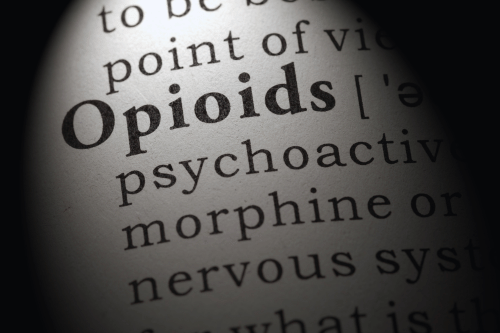
Table of Contents Seeking Drug Or Alcohol Detox? Sullivan Recovery is a leading drug and alcohol detox in Mission Viejo, California. Call Today! Clinically Reviewed By: Rachel Sweet | LMFT How Long Do Opioids Stay In Your System? Understanding how long opioids stay in your system is essential for anyone using them for pain relief, under medical supervision, or struggling with opioid misuse. These drugs belong to a class of drugs that interact with opioid receptors in the brain and spinal cord to alter the perception of pain. Knowing the detection window for different testing methods can help individuals make informed decisions and seek proper support when needed. What Are Opioids? Opioids are a class of drugs derived from the opium poppy plant or synthesized in labs. They include natural opioids, semi-synthetic opioids, and synthetic opioids. These drugs are commonly prescribed to treat severe pain and chronic pain, but they also carry a high potential for addiction. Common Opioids and Their Use Some common opioids include oxycodone, hydrocodone, morphine, and fentanyl. These prescription drugs are used for both acute pain and chronic opioid therapy. However, illicit opioids like heroin are often misused for their sense of euphoria and feelings of euphoria, contributing to the growing opioid crisis. How the Body Processes Opioids The duration opioids remain detectable depends on the type of opioid, dosage, and the individual’s metabolism. The drug’s half-life—how long it takes for half the drug to be eliminated—is a key factor in determining how long opioids linger in the system. A drug with a longer half-life, like long-acting opioids, will stay in the body longer than short-acting opioids. Individual metabolism, influenced by genetic factors, plays a major role in how quickly the body breaks down substances. A slower metabolism may cause opioids to accumulate in the body, increasing the detection window during testing. Additionally, the efficiency of liver function and kidney function is crucial to the elimination of opioids, as these organs filter toxins and help expel them through urine. People with underlying medical conditions—such as liver disease or impaired renal function—may process opioids more slowly. Factors like body composition, including body fat and fatty tissues, also affect how long opioids are stored in the body. The higher the body fat percentage, the more likely it is that opioids will be retained for longer periods of time. Other contributors include hydration level, medical history, and whether opioids are taken continuously or in single doses. Detection Windows by Drug Test Type Different drug testing methods vary in their detection windows, and each has its own level of sensitivity and use case. Urine Tests Urine tests are the most widely used testing methods for detecting the presence of opioids. These tests can detect short-acting opioids like heroin and codeine for approximately 1–3 days after use. Long-acting opioids, such as methadone or extended-release morphine, may remain detectable in urine for up to 7 days or more depending on the individual’s body weight, hydration level, and opioid dose. Urine testing is often used in outpatient settings like Sullivan Recovery to monitor patients during treatment for opioid misuse or Substance Use Disorder. It is a reliable tool for tracking compliance and spotting early signs of relapse. Blood Tests Blood tests have a much shorter detection window, generally identifying opioids within a few hours to about one day after use. Despite their limited timeframe, they are useful for measuring opioid dose in emergency medical settings. Blood testing provides real-time data on recent drug use, making it ideal for diagnosing opioid overdoses or monitoring patients receiving prescription opioids. Since opioids circulate through the bloodstream before being stored in tissues, blood tests offer precise insight into active levels of opioids in the body. However, their invasiveness and short window make them less suitable for routine screening. Saliva Tests Saliva tests are gaining popularity due to their ease of use and quick turnaround. They are ideal for detecting opioid use that occurred within 24 to 48 hours. These tests are frequently used in workplaces and roadside settings, particularly when testing needs to reflect recent drug use. Saliva testing identifies drugs before they are metabolized, making them useful for determining immediate exposure. For individuals undergoing opioid addiction treatment, saliva tests can be an effective monitoring tool, especially in outpatient rehab programs like those offered by Sullivan Recovery. Hair Tests Hair tests offer the broadest detection window, capable of identifying opioid use for up to 90 days. As opioids are absorbed by hair follicles through the bloodstream, they become embedded in the hair shaft, providing a long-term record of substance use. Hair testing is particularly helpful in legal or forensic contexts where a history of drug use must be established over extended periods. While not useful for detecting recent use due to the time it takes for hair to grow, it is valuable for verifying long-term opioid misuse or confirming recovery progress. Factors Affecting Detection Time Several individual factors influence how long opioids stay in your system. These variables determine how opioids are metabolized, stored, and eliminated, which in turn affects their detection window across different drug tests. Body Composition and Metabolism Body fat, body mass, and body weight affect how opioids are stored in fatty tissues. Opioids are lipophilic, meaning they bind easily to fat cells. Individuals with a higher fat percentage often retain opioids longer, as the drugs accumulate in fat deposits and release slowly over time. Individual metabolism also plays a crucial role. A slower metabolism delays the elimination of opioids, while faster metabolisms process and clear substances more rapidly. Metabolic speed is influenced by genetic factors, age, gender, and overall health, impacting how quickly the body breaks down different types of opioids. Hydration and Health Hydration level directly impacts the excretion of opioids through urine. Poor hydration slows down this process, increasing the time opioids remain detectable. Conversely, proper hydration can support quicker elimination, especially when combined with healthy liver function and kidney function. People with medical conditions such as liver disease or
Support Groups For Parents Of Drug Addicts

Table of Contents Seeking Drug Or Alcohol Detox? Sullivan Recovery is a leading drug and alcohol detox in Mission Viejo, California. Call Today! Clinically Reviewed By: Rachel Sweet | LMFT Support Groups for Parents of Drug Addicts Parents of children struggling with substance use disorder often feel lost, overwhelmed, and isolated. This blog explores support groups for parents of drug addicts, offering insight into how these communities help families cope with the challenges of addiction. Whether your child is actively using or in recovery, joining a group can provide clarity, strength, and tools for healing. These support groups serve as a valuable resource for navigating the emotional and practical impact of drug addiction on the entire family. Many also offer evidence-based strategies that help parents better understand the disease of addiction while protecting their own mental health. Understanding the Disease of Addiction Addiction is a chronic brain disease that changes how a person thinks, feels, and behaves. The disease of addiction can affect any family, regardless of background. Recognizing it as a medical issue helps families focus on treatment and recovery, not blame. Substance abuse disorder impacts not just the individual, but the entire family. Parents may struggle with guilt, anxiety, or enabling behaviors without realizing it. Support groups help shift this focus from shame to support. Why Support Groups Are a Valuable Resource Support groups for parents create a safe space where participants share stories, struggles, and solutions. These groups offer emotional relief, reduce isolation, and provide useful strategies to handle everyday challenges. They also help families understand that they are not alone in facing addiction. Parents gain key insights from others who have faced similar situations and found a way forward. Families Anonymous: Helping the Entire Family Heal Families Anonymous is a 12-step program focused on supporting relatives and friends of people with substance use challenges. This group operates similarly to Alcoholics Anonymous but focuses on the family’s recovery. It serves as a valuable resource for parents and loved ones dealing with a child’s substance use disorder. The program teaches evidence-based strategies to address addiction while prioritizing emotional stability and mental health. Families Anonymous acknowledges that drug addiction is a complex issue that impacts the entire family. Members learn how to detach with love, avoid enabling, and regain control of their lives while supporting their loved one’s recovery. It encourages participants to focus on their well-being, set boundaries, and stop enabling the addicted person. Meetings are free, open to all, and structured to protect anonymity and mutual respect. For many parents, joining Families Anonymous marks the first step in healing from the effects of addiction as a family disease. Al-Anon and Nar-Anon Family Groups Al-Anon Family Groups and Nar-Anon are two long-standing programs built on the 12-step model. Al-Anon helps families affected by alcohol addiction, while Nar-Anon focuses on drug addiction. Both groups provide a safe space for the adult family members of addicts to find support, encouragement, and understanding. These programs recognize addiction as a family disease and offer specific tools to support the healing of adult family members. Parents gain practical strategies to cope with their child’s substance abuse disorder and the emotional fallout it causes. The structure of these meetings helps reinforce positive habits and personal growth. Each meeting includes shared experiences and readings that promote recovery and self-care. Members often form a supportive network of friends of people facing similar struggles. For families in Orange County, these groups are a vital tool in coping with the ongoing effects of addiction and supporting long-term recovery. SMART Recovery and CRAFT: Evidence-Based Alternatives Some parents prefer support groups outside the 12-step format. Self-Management and Recovery Training (SMART) Recovery offers science-based strategies for managing addiction-related stress. SMART Family & Friends focuses on communication skills and positive reinforcement. The Community Reinforcement Approach & Family Training (CRAFT) is another evidence-based strategy. It teaches families how to influence a loved one’s behavior and improve their own mental health. Support Groups Help Address Addiction and Mental Illness Drug addiction often overlaps with mental illness, creating more complex challenges for families. Substance use disorder frequently co-occurs with conditions like anxiety, bipolar disorder, or PTSD, adding layers of difficulty to recovery. Parents may feel unprepared to handle depression, anxiety, or trauma tied to substance abuse. Support groups connect families with vital tools and resources to handle co-occurring disorders. These groups often include education on risk factors, effective coping methods, and communication techniques that reduce conflict and stress. With the help of peers and health care providers, families learn how to support recovery without sacrificing their own mental health. These groups can also help parents ask the right questions when working with health care providers. By addressing both the substance abuser’s needs and the family’s emotional well-being, support groups play a key role in long-term healing. Their focus on practical strategies makes them an essential part of managing the effects of addiction and mental illness within the family. Online Meetings and Family Forums Some parents cannot attend in-person meetings due to schedules or privacy concerns. Online support groups offer flexible access and confidentiality, serving as a valuable resource for those balancing work, caregiving, or transportation barriers. Virtual platforms remove obstacles, giving parents access to support groups that address addiction care from anywhere. Forums, webinars, and video calls allow parents to connect with others anytime. These online spaces serve as a safe space for open dialogue, offering peer advice, emotional support, and links to recovery resources. Participants can learn from other families of addicts, gain key insights, and stay engaged with tools for parents no matter where they live. Online options can be especially helpful for families in rural areas or those dealing with stigma. Websites for Families Anonymous, Al-Anon, and SMART Recovery provide easy access to digital meetings. These platforms help extend evidence-based strategies and family engagement opportunities to a wider community of advocates working to address substance use challenges across the country. The Role of Family Support in Addiction Recovery Family involvement is
What’s A 10 Panel Drug Test
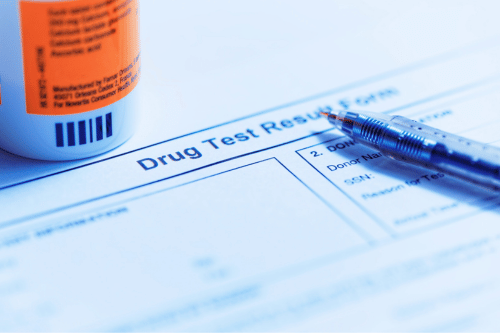
Table of Contents Seeking Drug Or Alcohol Detox? Sullivan Recovery is a leading drug and alcohol detox in Mission Viejo, California. Call Today! Clinically Reviewed By: Rachel Sweet | LMFT What’s a 10-Panel Drug Test? Understanding This Common Screening Tool A 10-panel drug test is a type of urine screening used to detect the presence of ten specific drugs in the body. It plays a vital role in workplace testing, medical assessments, legal investigations, and drug treatment programs. At Sullivan Recovery in Mission Viejo, we often use 10-panel drug tests as part of our outpatient monitoring process to ensure accountability during recovery. What Is a 10-Panel Drug Test? A 10-panel drug test screens for ten common prescription and illegal substances. The test is typically administered using a urine sample. This makes it a practical option for both clinical and non-clinical settings, including addiction recovery programs. What Does a 10-Panel Drug Test Screen For? This test checks for a mix of prescription medications and illegal drugs that are commonly abused. These include: Amphetamines Barbiturates Benzodiazepines Cocaine Marijuana (THC) Methadone Methaqualone Opiates Phencyclidine (PCP) Propoxyphene Sullivan Recovery uses this panel to monitor drug use in individuals enrolled in our outpatient drug and alcohol treatment program. Regular testing helps identify relapse early and supports long-term sobriety. How Urine Sample Collection Works Urine is the most common sample type for drug testing due to its ease of collection and quick turnaround time. The collection process is non-invasive and provides accurate detection for recent drug usage. A standard test requires the individual to provide a midstream urine sample, typically 30–60 mL, in a sterile cup. At Sullivan Recovery, urine testing is conducted in a private and supervised setting to ensure valid results. Supervision prevents sample tampering, while temperature strips and lab verification confirm authenticity. This process helps maintain the integrity of results used in our outpatient drug and alcohol treatment program. Who Uses a 10-Panel Drug Test? A wide range of employers, healthcare providers, and treatment centers use 10-panel tests. It is especially common in: Workplace drug testing Court-mandated testing Medical review situations Rehabilitation centers Private employers may use it as part of pre-employment screening, random testing, or return-to-duty policies. Legal systems often require it for individuals on probation or involved in custody cases. Physicians may also use the test to evaluate possible drug interactions or substance misuse. Our team at Sullivan Recovery uses these tests as a tool to support individuals through structured outpatient treatment while maintaining accountability. Drug testing helps track progress, reinforce abstinence, and guide necessary changes in care when relapse indicators appear. 10-Panel Drug Test vs. 5-Panel Drug Test A 5-panel drug test is a simpler version that only checks for five drug types, often focused on illicit drugs. In contrast, the 10-panel test offers a broader detection range that includes more prescription medications. This makes the 10-panel option ideal for recovery programs where prescription drug misuse may be a concern. Detection Times for Substances Different drugs remain in the urine for varying lengths of time. On average: THC: up to 30 days Cocaine: 2–4 days Opiates: 2–3 days Benzodiazepines: several days to weeks Methadone: 2–7 days These detection windows can vary based on metabolism, frequency of use, and other personal health factors. At Sullivan Recovery, understanding detection times helps us interpret results more accurately within the context of each client’s recovery plan. How Long Does It Take To Get Results? Most standard 10-panel drug tests deliver results within 1–3 business days. Negative results often come back faster, sometimes within 24 hours, especially if no further review is needed. Lab-confirmed results go through an internal quality check before release. If further analysis or Medical Review Officer (MRO) consultation is needed, it may take additional time. This applies when test results are inconclusive or positive and need verification. Delays may also occur if confirmatory testing such as GC/MS (gas chromatography/mass spectrometry) is required. At Sullivan Recovery, we prioritize fast and accurate testing to support active decision-making during outpatient treatment. Timely results help our clinical team adjust care plans and address concerns without delay. What Happens If a Test Is Positive? A positive drug test indicates the presence of one or more substances above the testing threshold. These thresholds are set to avoid false results from trace exposure or passive contact. The presence of a drug metabolite in the urine typically confirms recent use. In many cases, the result is sent to a Medical Review Officer for evaluation. The MRO contacts the individual to determine whether a legitimate medical explanation, such as a valid prescription, can justify the result. The MRO may request documentation or pharmacy records to complete the review. In our outpatient setting, we use positive tests to address potential relapse, revisit treatment goals, and adjust the care plan as needed. Our focus is always on accountability and providing additional support when necessary to help clients regain stability. Can You Get a False Positive? Yes, false positives can occur due to medications, food products, or supplements. Examples include: Certain cold medications mimicking amphetamines Poppy seeds triggering opiate results Prescription anxiety medications showing up as benzodiazepines Other substances like antidepressants, antibiotics, or even some over-the-counter pain relievers may also interfere with test results. For this reason, clients should always disclose any medications or supplements they’re taking prior to testing. That’s why we use MRO review at Sullivan Recovery when necessary, ensuring that clients are treated fairly and accurately based on their test results. This step helps distinguish between legitimate use and potential misuse, promoting a supportive and transparent treatment environment. Why Urine Testing Is Preferred Urine testing remains the most popular method due to its speed, cost-effectiveness, and ability to detect recent use. Other methods like hair samples or blood samples may provide longer or more precise detection, but they are often more invasive and expensive. Sullivan Recovery continues to rely on urine drug testing because it balances accuracy with efficiency, making it ideal for outpatient monitoring. Is Alcohol Included in

